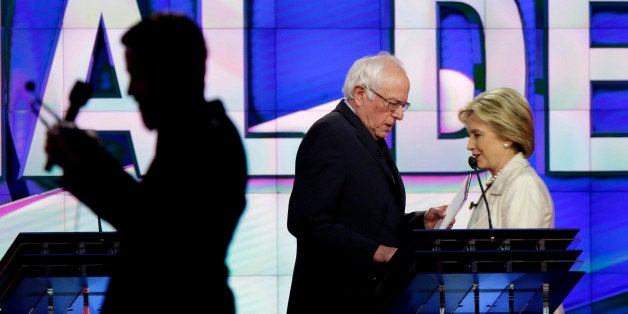
Partisanship, division and deadlock are nothing new in American politics.
But across the board, from the paralyzed 114th Congress, to the 4-4 Supreme Court to the deeply-divided American voter, gridlock is the new normal. In the decades that I have covered Washington politics, I have not seen the like of it.
Such is the stage for the Maryland primary in a couple of weeks. In most years, our primary comes too late to matter. Not this year. Maryland may not decide definitively either party's 2016 Presidential choice, but it will be important, not the least in establishing the momentum the leading candidates will carry into their respective conventions and by likely determining who will succeed the retiring Senator Barbara Mikulski.
Congress is the gridlock poster-child this year. The current, acrimonious Congressional tone had its historic origins back in 1798, when a hot-tempered Connecticut Federalist, Roger Griswold, attacked his esteemed colleague from Vermont, Rep, Matthew Lyon, with a cane on the House floor. Lyon's considered response was to snatch a hot fire tong from the roaring fire and fight back.
Today's Congress uses different tools, but is no less fierce in its debates, and is far less in its record of accomplishment. If only President Truman, who campaigned against the "do-nothing" 80th Congress in 1948, could see the 114th version at work, if that is the word for it, he would see how little can get done in a two-year legislative session. Little meaningful legislation has been adopted and the President's nominations for the federal bench languish.
The Supreme Court logjam is the most flagrant example of willful Congressional gridlock. The late Justice Antonin Scalia was not yet in his grave when Senate Majority Leader Mitch McConnell announced that the World's Greatest Deliberative Body would not deliberate, advise or consent to a successor until a new President takes office in 2017.
The immediate result: a 4-to-4 Supreme Court deadlock that gave a default victory to public employee unions opposed by Republican-backed interest groups. A sweet irony for Democrats in both timing and substance.
A second, less prominent case involving bank guarantees also tied 4-to-4, leaving the lower court decision in place. In a single week, the Roberts Court tied a 26-year-old record for tie votes in a single term. More ties can be expected, with nearly 50 cases still on the docket for the current term and no replacement for Justice Scalia in sight.
The American voter is divided as well, red and blue. A nationwide poll by the Pew Research Center reported that Republicans and Democrats are more divided on ideological lines -- and partisan antipathy is deeper and more extensive -- than at any point in the last two decades.
The voters have separated themselves into ideological silos on the right and left. The Pew study suggests that this division manifests itself in myriad ways, from how people vote to where they live, who they choose as friends and which cable television they watch to get their news.
The result: 92 percent of Republicans identify themselves as right of the median Democrat, while 94 percent of Democrats are to the left of the median Republican, according to Pew. The left hand is definitely not talking to the right these days.
This polarization is conspicuous in the Presidential primaries. It emerges in the angry fistfights at the Trump rallies and the bellicose statements from Senator Ted Cruz. Democrats are split as well, with some Bernie Sanders supporters announcing in advance that they will not rally behind Hillary Clinton if she wins the party nomination.
Some of the air has begun to leak out of the Trump bubble, but the fundamental split in the GOP remains. Hillary Clinton's path to nomination narrowed after Wisconsin, spurring Bernie Sanders to greater efforts in New York, which is genuinely the Big Apple for both parties this year.
Marylanders, of course, are already split, with a Republican governor and a Democratic majority controlling both houses in the legislature. With the primary coming up on April 26, they will add their voices to the general election cacophony.